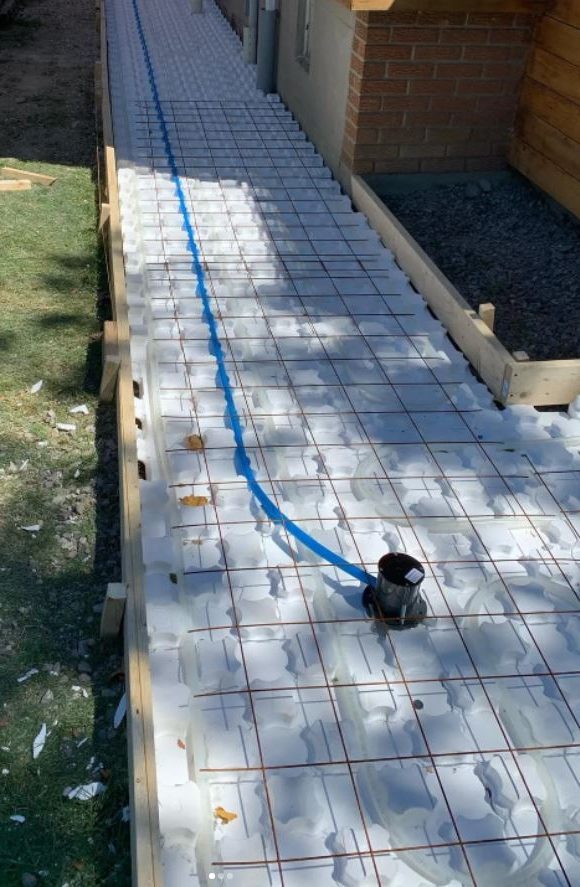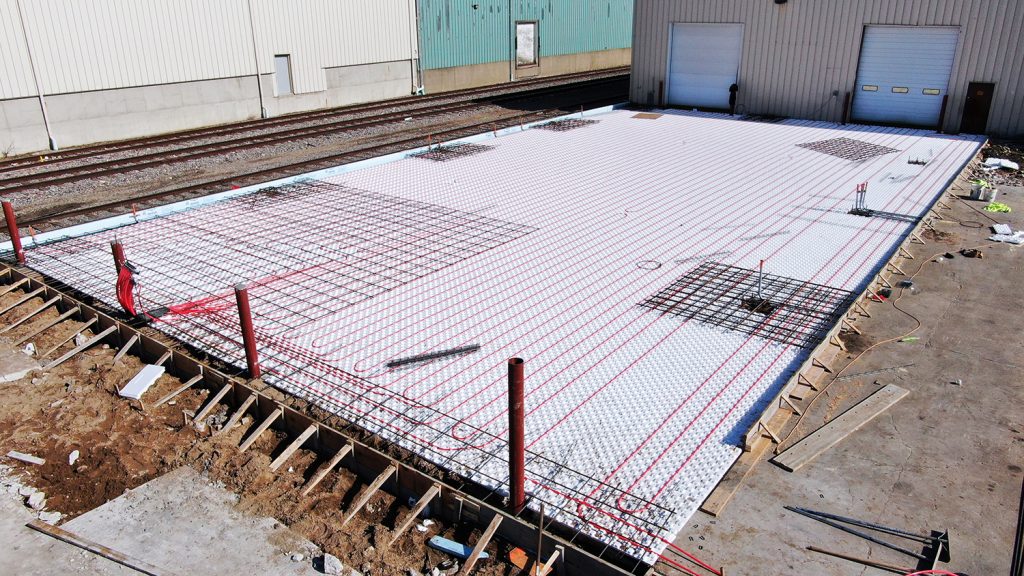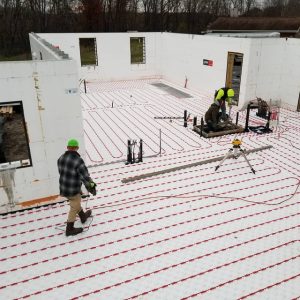Are you wondering whether a Snow and Ice Melt (SIM) system is a viable alternative to snow removal and deicing chemicals?
In most cases — yes, it is. And in the post below, we’ll show you 4 distinct advantages a SIM system can offer to any facility, despite the slightly higher setup and operating costs.
1. Lower Risk of Slip and Fall Accidents
Slip-and-fall settlements can range anywhere between $10,000 and $50,000 in the US and $10,000 and $30,000 in Canada. The sum can skyrocket into the millions, depending on the severity of the injury and the circumstances. Throw in thousands more in litigation costs, and that icy sidewalk suddenly turns into a head-spinning expense.
And if it’s your own employee who’s unfortunate enough to slip and hurt themselves on your property, don’t forget to factor in their time away from work as well as loss of morale and motivation.
Now, sure enough, there’s the General Liability Insurance. But will it cover the entire settlement amount? And what will happen to your premiums once such an accident occurs and your facility is found responsible?
You can easily avert all these headaches by ensuring that pedestrian walkways and roadways on your property never present a slip hazard, such as ice.
Shoveling and salt will do the trick. However, temperature swings and snowfall can often come with little warning, just like maintenance personnel that can’t make it in on time to clear the snow and ice.
Snow and Ice Melt Systems Help Avert Slip-and-Fall Accidents
Snow and ice melt systems, on the other hand, are operated automatically, or manually with the flick of a switch. This means that the pipes beneath your driveways can start circulating hot water well in advance of an approaching snowfall or conditions that would cause ice to form on paved surfaces.
Granted, SIM systems aren’t free. Their installation can cost anywhere between $15 and $40 per square foot. And their operating costs can range between several hundred to several thousand dollars per heating season, depending on the local climatic conditions and the size of the heated slab.
That said, remember — you’d still be spending significant amounts of money on snow and ice clearing in the absence of a SIM system. Not to mention that the total annual running costs of SIM systems are still far lower than your average slip-and-fall claim settlement.

2. Higher Customer Satisfaction
Using a SIM system to keep your facility’s exterior surfaces ice-free is an excellent alternative to deicing salt. Just ask anyone who’s had salt eat away at their expensive leather shoes. Or anyone who’s shown up to the office with salt stains on the bottoms of their pants.
Worse yet, deicing salt is the mortal enemy of pets’ feet in winter, to which anybody walking their furry companions on salted pavements would attest.
On the other hand, snow and Ice Melt systems don’t cause any damage to footwear, clothing, or pets. So, you can expect your facility’s customers, visitors, and employees to be far happier with a heated sidewalk than a salted one.
3. Less Degradation to the Exterior of the Facility
Deicing chemicals aren’t only hazardous to people’s belongings and pets; they can also damage your facility’s surroundings over time.
For one, salt can worsen the impact of freeze-and-thaw cycles in concrete — a destructive process that would affect any concrete surfaces that come in contact with the salt, like pavers, curbs, etc.
Asphalt also isn’t immune from the effects of deicing salt, and neither is the vegetation that may grow adjacent to your facility year-round.
On the other hand, SIM systems pose no such threat to your property’s exterior.

Don't miss a thing!
Subscribe for exclusive content, insider industry news and limited edition webcasts.
4. Lower Impact on the Environment
Some of the newer deicing chemicals, like magnesium chloride, may have less of an impact on concrete and asphalt surfaces. However, they’re still incredibly harmful to the surrounding environment, including the soft landscaping on your property.
Any chemicals that don’t end up on your lawns or in the hedges typically make their way into the storm sewer system. This path leads them to various streams and waterways, where they also harm local ecosystems.
To summarize — opting for a SIM system instead of deicing chemicals can lower your facility’s impact on the environment. To be fair, this achievement will be somewhat soured by the CO2 emissions produced by boilers that supply hot water to the SIM system.

Wrapping It Up
Snow and Ice Melt systems may not be cheap to set up and operate, but overall they provide a healthier, cleaner, and more customer-friendly alternative to deicing chemicals. They also make it that much easier to keep a sidewalk free of slip hazards, thus helping facilities managers prevent the risk of costly slip and fall accidents.






